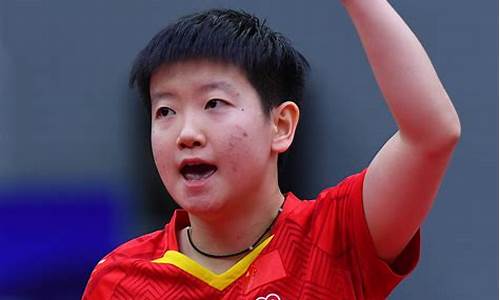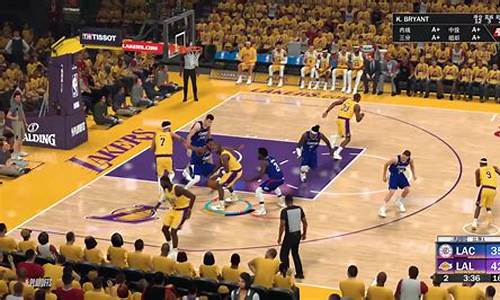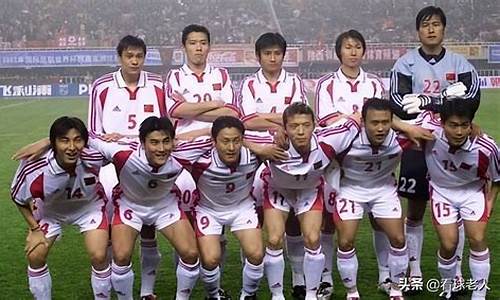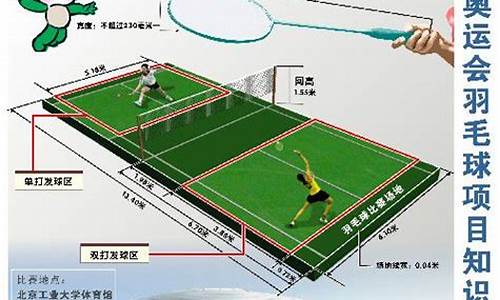五环是奥运会的象征用英语怎么说_奥运五环是奥运会的一个象征英文翻译
1.用英文介绍奥运五环象征着什么,奥运的起源,关于奥运的问题(全英文)
2.奥运会五环(世界和平与团结的象征)
3.奥运五环各是什么运动
4.奥运五环用英文介绍
5.奥运五环的由来(有英语,还有解释)
6.奥运五环资料英语版
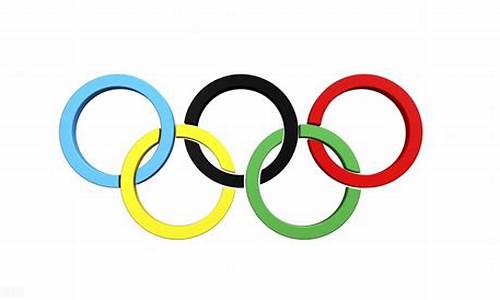
奥运五环的意义,奥运五环的含义,奥运五环和颜色
奥运五环意义和含义:标志象征五大洲和全世界的运动员在奥运会上相聚一堂,充分体现了奥林匹克主义的内容,“所有国家—所有民族”的“奥林匹克大家庭”主题。
奥林匹克标志最早是根据1913年顾拜旦的提议设计的,起初国际奥委会用蓝、黄、黑、绿、红色作为五环的颜色,是因为它能代表当时国际奥委会成员国国旗的颜色。1914年在巴黎召开的庆祝奥运会复兴20周年的奥林匹克全会上,顾拜旦先生解释了他对标志的设计思想:“五环———蓝、黄、绿、红和黑环,象征世界上承认奥林匹克运动,并准备参加奥林匹克竞赛的五大洲第六种颜色白色———旗帜的底色,意指所有国家都毫无例外地能在自己的旗帜下参加比赛。”因此,作为奥运会象征、相互环扣一起的5个圆环,便体现了顾拜旦提出的可以吸收殖民地民族参加奥运会,为各民族间的和平事业服务的思想。
奥运五环的颜色:蓝、黄、黑、绿和红色开始成为五大洲的象征,随着时间的推移和奥林匹克运动的发展变化,对奥林匹克标志的阐释也出现了变化。根据1991年的最新版的《奥林匹克宪章》“奥林匹克标志”词条的附则补充解释,奥林匹克旗和五环的含义,不仅象征五大洲的团结,而且强调所有参赛运动员应以公正、坦诚的运动员精神在比赛场上相见。
奥运会五环旗的含义 : 在每届奥林匹克运动会开幕时,运动场中间都要高高地悬挂一面奥林匹克旗帜,这面白色无边旗中间有五个圆环组成的图案。这是根据现代奥林匹克运动会创始人皮埃尔·德·顾拜旦男爵的建议和构思制作的。
奥林匹克旗帜五个不同颜色的圆环(天蓝色代表欧洲,**代表亚洲,黑色代表非洲,草绿色代表澳洲,红色代表美洲)连接在一起象征五大洲的团结,象征全世界的运动员以公正、坦率的比赛和友好的精神在奥林匹克运动会上友好相见,欢聚一堂,以促进奥林匹克运动的发展
用英文介绍奥运五环象征着什么,奥运的起源,关于奥运的问题(全英文)
奥林匹克旗帜的五环象征五大洲和全世界的运动员在奥运会上相聚一堂,充分体现了奥林匹克主义的内容," 所有国家—一所有民族"的“奥林匹大家庭"主题。
它不仅代表着五大洲全世界运动员在奥林匹克旗帜下的团结和友谊,而且强调所有运动员应以公正、坦诚的运动精神在比赛场上相见。
扩展资料:
奥林匹克五环标志(Olympic Logo /Symbole Olympique/Olympic Rings)是由皮埃尔·德·顾拜旦先生于1913年构思设计的,是由《奥林匹克宪章》确定的,也被称为奥运五环标志,它是世界范围内最为人们广泛认知的奥林匹克运动会。
奥林匹克标志最早是根据1913年顾拜旦的提议设计的,起初国际奥委会用蓝、黄、黑、绿、红色作为五环的颜色,是因为它能代表当时国际奥委会成员国国旗的颜色。
1914年在巴黎召开的庆祝奥运会复兴20周年的奥林匹克全会上,顾拜旦先生解释了他对标志的设计思想:“五环——蓝、黄、绿、红和黑环,象征世界上承认奥林匹克运动,并准备参加奥林匹克竞赛的五大洲,(天蓝色代表欧洲,**代表亚洲,黑色代表非洲,草绿色代表大洋洲,红色代表美洲)第六种颜色白色——旗帜的底色,意指所有国家都毫无例外地能在自己的旗帜下参加比赛。”因此,作为奥运会象征、相互环扣 。一起的5个圆环,便体现了顾拜旦提出的可以吸收殖民地民族参加奥运会,为各民族间的和平事业服务的思想。
百度百科-五环
奥运会五环(世界和平与团结的象征)
追分80……楼主应该没这么大方吧
The Olynpic Games
The Olympic Games, first held in 776BC, has a history of more than one thousand yiars. The Games is held every four years.
Many countries try their best to bid forhosting the Olympic Games. And every country does its best to get more medals in the Games. In 2000, the city of Sidney held the 27th Olympic Games. Over one hundred countries all over the world took part in it. We won 28gold medals that year. China, a major sport country, will hold the 29th Olympic Games in 2008. People from all walks of life are participating in various activities and making good preparations for it.
There are five rings on the Olympic flag, which are considered to symbolize, the five continents: Europe, Asia, Africa, Australia and America. The Olympic motto is: "Swifter, higher, stronger." The Games can promote the understanding and friendship among different peoples and different nations.
奥林匹克运动会
公元前776年首次举办的奥运会,已经有一千多年的历史了。奥运会每四年举办一次。
许多国家尽他们最大的努力争办奥运会。每个国家在运动会中都争取拿更多的奖牌。2000年,悉尼举办了第27届奥运会,全世界100多个国家参加了这次盛会。那年我国获得了28枚金牌。中国作为一个体育大国,将于2008年举办第29届奥运会。各条战线的人们正在为奥运会做着各项准备。
奥运会的会旗上有五个环。五环被认为象征着五大洲:欧洲、亚洲、非洲、澳洲和美洲。奥运会的口号是:“更高,更快,更强。”奥运会能够促进各民族以及各个国家之间的理解和友谊
奥运会英文文章:://zhidao.baidu/question/5362903.html?si=1
The international Olympic Committee constituted itself on 23rd June 1894.国际奥委会于1894年6月23日成立。
The Olympic symbol, the five interlocking rings, represents the union of the five continents and the meeting of the athletes of the world at the Olympic Games.奥林匹克的标志是五个相连的圆环,它代表着五大洲的团结和全世界运动员在奥运会上相聚一堂。
The official languages of the IOC are French and English.国际奥委会的官方语言是法语和英语。
The Olympic flame is a symbol reminiscent of the ancient Olympic Games.奥运圣火是人们缅怀古代奥运会的象征。
The Olympic Games consist of the Games of the Olympiad and the Olympic Winter Games. Both take place every four years.奥运会包括夏季奥运会和冬季奥运会,它们都是每四年举办一次。
The Olympic Games shall be proclaimed open by the Head of State of the host country.奥运会由东道国国家元首宣布开幕。
奥运五环各是什么运动
奥运会五环,是奥林匹克运动会的象征,也是世界和平与团结的象征。五环代表着五大洲,蓝色环代表欧洲,**环代表亚洲,黑色环代表非洲,绿色环代表澳洲和大洋洲,红色环代表美洲。五环的颜色和环的相互交叉,象征着五大洲的相互交流和合作,体现了奥林匹克精神的核心价值观:和平、友谊、团结。
五环的历史
奥运会五环的历史可以追溯到1913年,当时国际奥委会皮埃尔·德·顾拜旦提出了五环的构想。他认为,五环代表着五大洲,可以成为奥林匹克运动会的象征。1914年,国际奥委会正式通过了五环的设计方案。五环的设计者是法国艺术家皮埃尔·德·顾拜旦,他的设计灵感来自于奥林匹克运动会的口号:“更快、更高、更强”。
五环的含义
五环的含义十分丰富,它代表着世界各国和地区的团结、友谊和和平。五环的颜色也有着深刻的含义,蓝色代表欧洲的天空和海洋,**代表亚洲的大地和太阳,黑色代表非洲的肤色和大陆,绿色代表澳洲和大洋洲的自然环境,红色代表美洲的热情和活力。五环的相互交叉,象征着五大洲的相互交流和合作,体现了奥林匹克精神的核心价值观:和平、友谊、团结。
五环的象征意义
奥运会五环不仅是奥林匹克运动会的象征,更是世界和平与团结的象征。五环代表着五大洲,象征着世界各国和地区的团结、友谊和和平。五环的颜色也有着深刻的含义,蓝色代表欧洲的天空和海洋,**代表亚洲的大地和太阳,黑色代表非洲的肤色和大陆,绿色代表澳洲和大洋洲的自然环境,红色代表美洲的热情和活力。五环的相互交叉,象征着五大洲的相互交流和合作,体现了奥林匹克精神的核心价值观:和平、友谊、团结。
五环的应用
奥运会五环不仅是奥林匹克运动会的象征,还被广泛应用于各种场合。五环的形象已经成为了世界公认的标志,不仅出现在奥林匹克运动会的各个场馆和赛事中,还出现在各种体育品牌的标志中。此外,五环还被应用于各种文化活动和国际交流活动中,成为了世界各国和地区的象征。
奥运五环用英文介绍
奥运五环不代表运动,五个不同颜色的圆环代表了参加现代奥林匹克运动会的五大洲——欧洲、亚洲、非洲、大洋洲和美洲。有一个说法是:**代表亚洲,黑色代表非洲,蓝色代表欧洲,红色代表美洲,绿色代表大洋洲。
奥林匹克标志(Olympic Logo /Symbole Olympique/Olympic Rings)是由皮埃尔·德·顾拜旦先生于1913年构思设计的,是由《奥林匹克宪章》确定的,也被称为奥运五环标志,它是世界范围内最为人们广泛认知的奥林匹克运动会标志。它由5个奥林匹克环套接组成,有蓝、黄、黑、绿、红5种颜色。环从左到右互相套接,上面是蓝、黑、红环,下面是是黄、绿环。整个造形为一个底部小的规则梯形。
奥运五环的由来(有英语,还有解释)
国际奥委会选择五个相连的圆环作为其标志,并选择了相应的色彩。五个圆环代表五大洲:大洋洲、非洲、美洲、亚洲和欧洲。更深一层的意思是代表着全世界的运动员都聚集在奥林匹克运动会上。
朴素的白色背景寓意着和平。五种颜色从左到右分别是:上方三个蓝、黑、红,下方黄和绿。这五种颜色都为各国国旗上的常见颜色,而且没有被赋予特殊含义。但是也有人认为,这五种颜色分别代表着五大洲。
Olympic Rings
The colours of the interlinked Olympic rings were chosen by the International Olympic Committee (IOC) , to represent the union of the 5 continents , Australia , Africa , America , Asia and Europe and further signify the meeting of the worlds athletes at the Olympic Games.
The plain white background of the Olympic flag is symbolic of peace throughout the games. The five colours of the rings from left to right are blue, black and red across the top with yellow and green along the bottom , these colours may be found on most flags of the world and officially hold no other particular significance , although some believe each colour represents a particular continent.
://image.baidu/i?tn=baiduimage&ct=201326592&lm=-1&cl=2&word=%B0%C2%D4%CB%CE%E5%BB%B7
奥运五环资料英语版
The emblem of the Olympic Games is composed of five interlocking rings (blue, yellow, black, green, and red respectively) on a white field. This was originally designed in 1913 by Baron Pierre de Coubertin, the founder of the modern Olympic Games. Upon its initial introduction, de Coubertin stated the following in the August, 1913 edition of Revue Olympique:
The emblem chosen to illustrate and represent the world Congress of 1914 ...: five intertwined rings in different colours - blue, yellow, black, green, red - are placed on the white field of the paper. These five rings represent the five parts of the world which now are won over to Olympism and willing to accept healthy competition.
In his article published in the "Olympic Revue" the official magazine of the International Olympic Committee in November 1992, the American historian Robert Barney explains that the idea of the interlaced rings came to Pierre de Coubertin when he was in charge of the USA, an association founded by the union of a two French sports associations and until 1925, responsible for representing the International Olympic Committee in France: The emblem of the union was two interlaced rings (like the vesica piscis typical interlaced marriage rings) and originally the idea of Swiss psychiatrist Carl Jung because for him the ring meant continuity and the human being.[2]
The 1914 Congress had to be suspended due to the outbreak of World War I, but the emblem (and flag) were later adopted. They would first officially debut at the VIIth Olympiad in Antwerp, Belgium in 1920.
The emblem's popularity and widespread use began during the lead-up to the 1936 Summer Olympics in Berlin. Carl Diem, president of the Organizing Committee of the 1936 Summer Olympics, wanted to hold a torchbearers' ceremony in the stadium at Delphi, site of the famous oracle, where the Pythian Games were also held. For this reason he ordered construction of a milestone with the Olympic rings carved in the sides, and that a torchbearer should carry the flame along with an escort of three others from there to Berlin. The ceremony was celebrated but the stone was never removed. Later, two British authors Lynn and Gray Poole when visiting Delphi in the late 1950s saw the stone and reported in their "History of the Ancient Games" that the Olympic rings design came from ancient Greece. This has become known as "Carl Diem's Stone".[3] This created a myth that the symbol had an ancient Greek origin. The rings would subsequently be featured prominently in Nazi images in 1936 as part of an effort to glorify the Third Reich.
The current view of the International Olympic Committee is that the emblem "reinforces the idea" that the Olympic Movement is international and welcomes all countries of the world to join.[4] As can be read in the Olympic Charter, the Olympic symbol represents the union of the five continents and the meeting of athletes from throughout the world at the Olympic Games. However, no continent is represented by any specific ring. Though colourful explanations about the symbolism of the coloured rings exist, the only connection between the rings and the continents is that the number five refers to the number of continents. In this scheme, the Americas are viewed as a single continent, and Antarctica is omitted.
五环旗的诞生
1914年6月,国际奥委会在巴黎召开第十六届全会。全会闭幕的日子——6月23日,正好是顾拜旦在巴黎索邦第一次召集奥林匹克会议建议振兴古代奥运会的20周年纪念日。在奥林匹克运动诞生20年的喜庆之际,国际奥委会顾拜旦男爵向与会的委员们献上了自己的杰作——国际奥委会会旗,它由洁白的底色和蓝、黄、黑、绿、红的五色圆环组成的五环旗.
后来又将5 个不同颜色的圆环解释奥运五环,也称为奥林匹克环,从左至右为天蓝、黄、黑、绿、红五色。这个标志是第一届现代奥运会上,由顾拜旦提议设计的,起初的设计理念是它能够概括会员国国旗的颜色,但以后对这五种颜色又有其他的解释。19年国际奥委会出版的《奥林匹克评论》(第四十期)强调,五环的含义是“象征五大洲的团结,全世界的运动员以公正、坦率的比赛和友好的精神,在奥运会上相见”。 为五大洲的象征.
奥运五环的来历
说起五环的来历,曾经有过这样一个有趣的故事。 1936年第11届柏林奥运会第一次举行火炬传递活动,火炬的传递路线自奥林匹亚开始,从希腊北部出境,沿多瑙河穿过奥地利,最后进入德国。为了烘托这一具有象征意义的活动,奥运会组委会卡尔·迪姆及其同事几乎完全按照古奥运会的情景来布置沿途经过的古希腊遗址。火炬到达德尔菲帕那萨斯山的古代运动场时要举行一个特别仪式,这时,迪姆突发奇想,在一个高约3英尺的长方形石头的四面设计并刻上了现代奥林匹克运动的五环标志,放在了古运动场的起跑线一端。仪式结束后,火炬继续北上,而这块作为道具的石头却被留在了古运动场。
由于极少有人知道这块刻有五环标志石头(后被称做“迪姆之石”)的真实身份,此后的很长一段时间,它被当做了“有3000年历史的古代奥运会遗迹”。这个以讹传讹的错误直到20世纪60年代才被德尔菲的希腊官员指出。12年5月,这个文物被送到德尔菲的另一个地方——古罗马广场入口处。
事实上,现代奥林匹克运动的五环标志出自现代奥运会创始人顾拜旦之手。顾拜旦认为奥林匹克运动应该有自己的标志,这个念头在他的脑海里盘桓已久。1913年,他终于构思设计了五环标志和以白色为底印有五环的奥林匹克旗,打算在国际奥委会成立20周年之际推出这个标志。
19 年6 月,国际奥委会正式宣布了会旗和五环的含义:根据《奥林匹克宪章》,奥林匹克旗帜和5 个圆环的含义是:象征五大洲的团结以及全世界运动员以公正、坦率的比赛和友好的精神在奥运会上相见。
奥运会会旗和奥运会圣火的含义
The OLYMPIC FL
现代奥运会创始人顾拜旦于1913-1914年间设计了奥运会的会旗。它由5个奥林匹克环从左至右套接而成,可以是单色,也可以是蓝、黄、黑、绿、红5种颜色。最初的解释是五种颜色代表各国国旗的颜色,后来又将5个不同颜色的圆环解释为五大洲的象征。1920年,奥林匹克旗第一次飘扬在安特卫普夏季奥运会体育场。这届奥运会后,历届奥运会开幕式上由上届举办城市转交此旗,由举办城市保存,比赛期间主运动场仅悬挂代用品。
Baron de Coubertin designed the Olympic Flag in 1913-14. It has five interlocking rings (blue, yellow, black, green and red) on a white background. The ring's colours were based on the knowledge that at least one of these colours is on every flag of each participating country. The five interlocking rings represent the union of the five continents and the meeting of the athletes of the world at the Olympic Game.
The Olympic Flag was used for the first time in the 7th Olympiad in Antwerp, Belgium in 1920. It is paraded during the opening ceremony of each Game. At the end of the Games, the Olympic Flag is presented to the next host city by the Games host city.
声明:本站所有文章资源内容,如无特殊说明或标注,均为采集网络资源。如若本站内容侵犯了原著者的合法权益,可联系本站删除。

